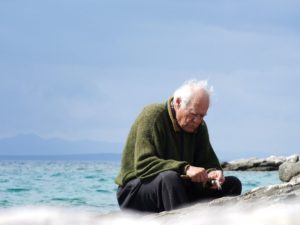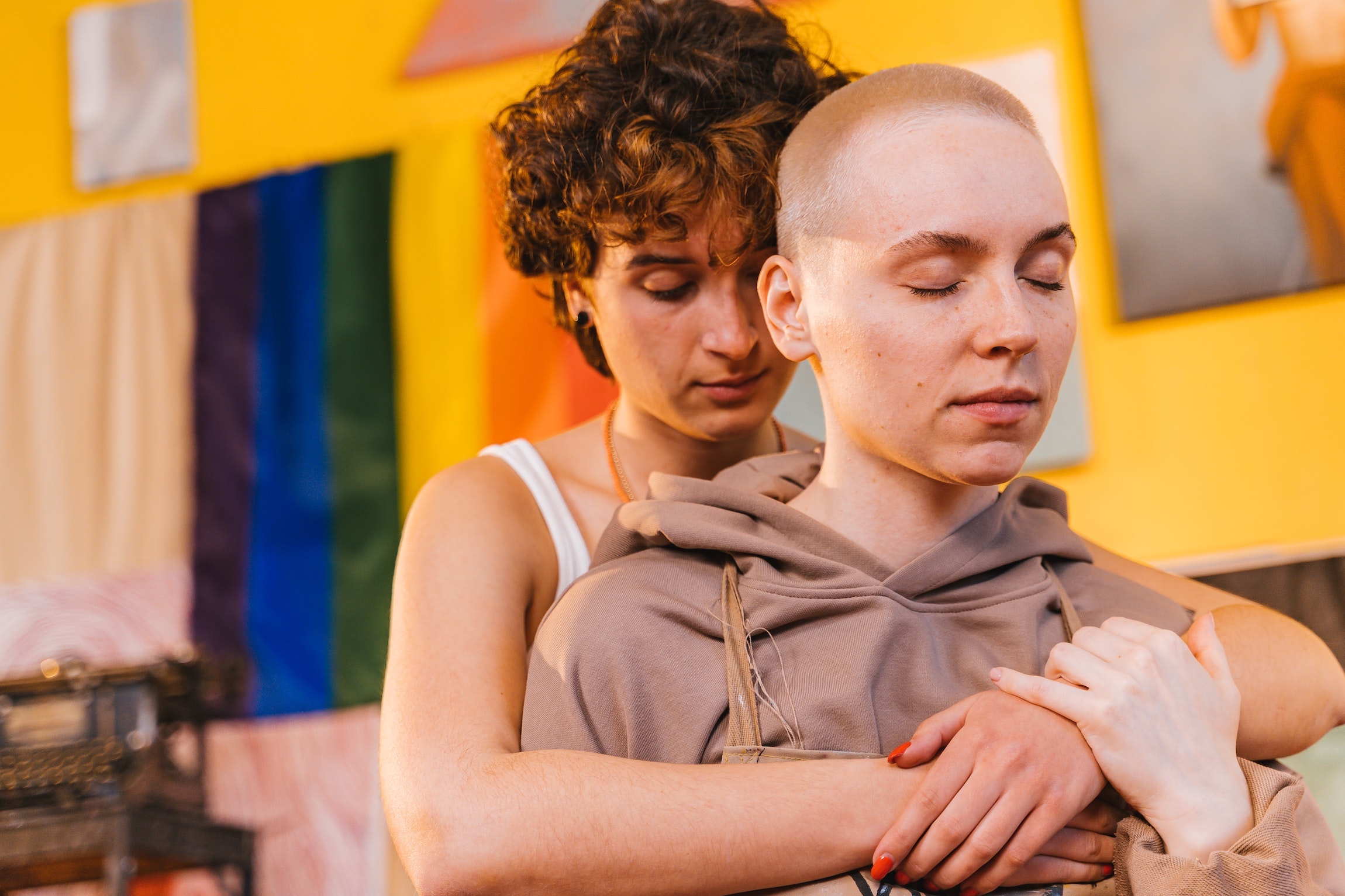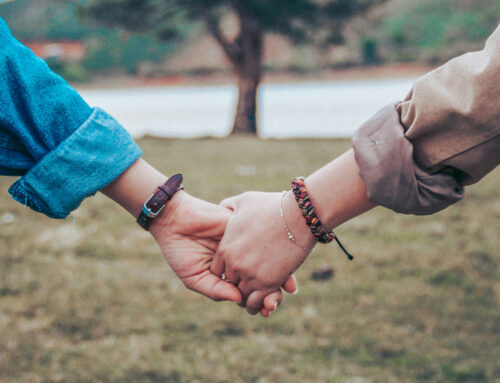Touch is the first sense to develop in utero and often the last sense to leave before death. Of the five major senses (touch, sight, hearing, smell, taste), touch is the only one that we cannot live without. It is so critical to survival and to physical development that vulnerable infants who are deprived touch die.
 Richard Renaldi in his “Touching Strangers” project, decided to put two or three strangers together in intimate public poses like hugging or touching a face while looking intimately into another person’s eyes. Not surprisingly, those strangers who touched strangers in an intimate way initially felt pretty awkward. What was surprising though, was that by the end of the 10-15 minute mini photo shoots, most people said they felt a closeness and sense of caring with the stranger they’d been touching. Most participants also reported feeling good. 10-15 minutes of touching – that’s all it took to make an authentic connection with a stranger. It makes me wonder “What kind of world we would live in if we touched more?” I suspect we would have to give up the illusion of separateness. We’d have to face the truth of how really wacked-out our individualistic Western value system is. We’d have to give up the idea of “us versus them.” We’d have to face the truth of our own isolation and how truly hungry we are for connection and physical contact.
Richard Renaldi in his “Touching Strangers” project, decided to put two or three strangers together in intimate public poses like hugging or touching a face while looking intimately into another person’s eyes. Not surprisingly, those strangers who touched strangers in an intimate way initially felt pretty awkward. What was surprising though, was that by the end of the 10-15 minute mini photo shoots, most people said they felt a closeness and sense of caring with the stranger they’d been touching. Most participants also reported feeling good. 10-15 minutes of touching – that’s all it took to make an authentic connection with a stranger. It makes me wonder “What kind of world we would live in if we touched more?” I suspect we would have to give up the illusion of separateness. We’d have to face the truth of how really wacked-out our individualistic Western value system is. We’d have to give up the idea of “us versus them.” We’d have to face the truth of our own isolation and how truly hungry we are for connection and physical contact.
In fact, there is a relatively new term floating around called “skin hunger.” Skin hunger is essentially the emotional longing we experience as a result of the loss of touch in society. This no-touch orientation we have is so ingrained that we can’t even see it. But look at Brett and Kate McKay’s photo history “Bosom Buddies,” which shows pictures of male friendships in the 1800s and early 1900s and you will be shocked at the familiarity and ease with which heterosexual men make physical contact with one another. Not only have we decreased our comfort with touch over time, we’re also culturally more uptight about touch than most of the planet. US Americans and the English are among the lowest touch cultures in the world. How low? Well, if you take two American friends and count how many times they touch within an hour conversation, you’ll be bored because they’ll only touch twice on average. Observe Puerto Ricans, on the other hand, and you’ll have a hard time keeping track because on average they touch 180 times in an hour-long conversation!
This skin hunger is what motivated Juan Mann to begin the Free Hugs Campaign. Free hugs is a social movement wherein people offer hugs to strangers in public places, usually while holding a sign that says, “Free Hugs.” Juan began this during a difficult time in his life when he was feeling depressed and lonely and noticed that he felt better after some random stranger gave him a hug. The Free Hug movement has crossed the globe into places like Hollywood, Korea, Italy, and Belgium.
 If you’re old, disabled, or homeless, you’re even more likely to suffer from skin hunger because these groups are among the least touched in US American society and have been referred to as America’s “untouchables.” But, compared to other parts of the planet, all Americans are “untouchables.” A twenty-second hug releases the bonding hormone and neurotransmitter oxytocin. When we’re full up of oxytocin, we’re happier and less anxious so oxcytocin is nature’s antianxiety and antidepressant. Holding babies and any kind of touch really, even petting an animal can release oxytocin. So can looking lovingly in another’s eyes. It’s also released during orgasms in both men and women.
If you’re old, disabled, or homeless, you’re even more likely to suffer from skin hunger because these groups are among the least touched in US American society and have been referred to as America’s “untouchables.” But, compared to other parts of the planet, all Americans are “untouchables.” A twenty-second hug releases the bonding hormone and neurotransmitter oxytocin. When we’re full up of oxytocin, we’re happier and less anxious so oxcytocin is nature’s antianxiety and antidepressant. Holding babies and any kind of touch really, even petting an animal can release oxytocin. So can looking lovingly in another’s eyes. It’s also released during orgasms in both men and women.
So, if you want to feel better, be happier and less anxious, and if you want to feel more connected to others here’s what you might want to do. Touch the people you love. And what the heck, touch strangers if they’re willing. Pet some animals. Hold babies and children. Touch some old people too, because they really need it. Look in people’s eyes and have a heck of a lot more orgasmic sex. Tell your lover you heard it from a therapist.
May we release the constraints that keep us trapped within our physical isolation. May we lovingly touch and be touched.
Sabrina Santa Clara
The post Getting in Touch: The Power of Physical Contact appeared first on Integrated Holistic Counseling.



